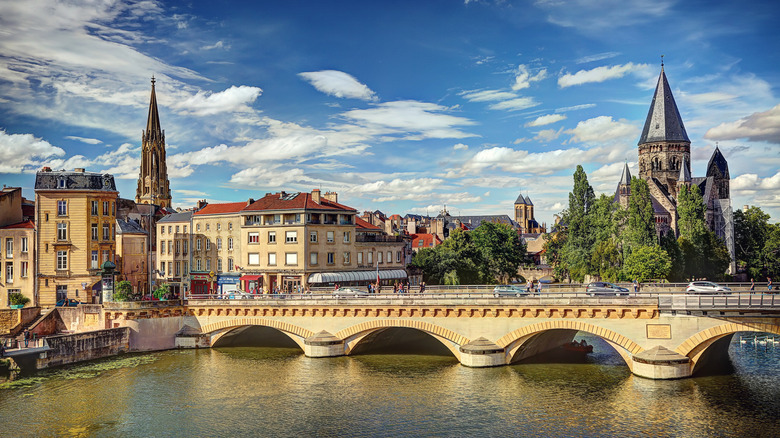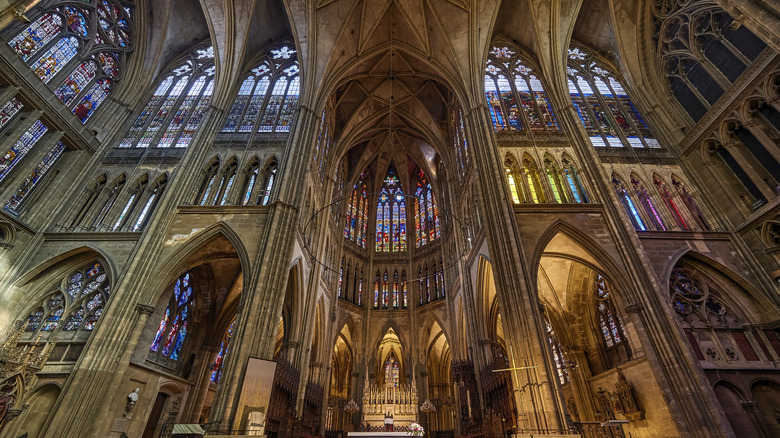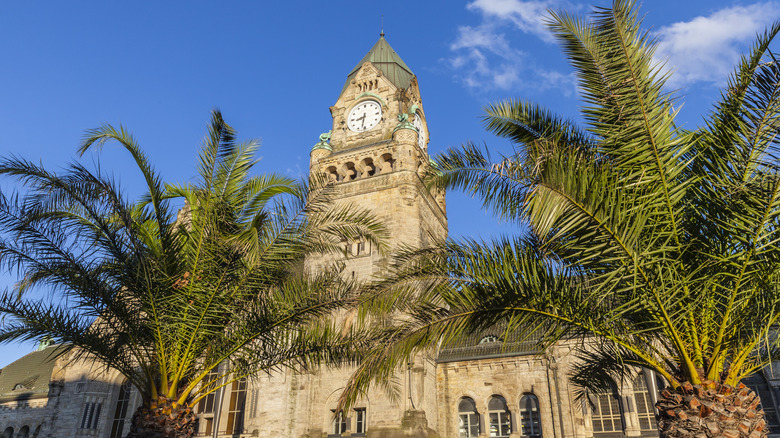France's 'Green City' Is A Wildly Underrated Artsy Destination Blending German And French Culture
Situated at the confluence of the Moselle and Seille rivers, Metz, the capital of the Lorraine region in northeastern France, is a stunning city. It harmoniously blends a vibrant arts scene with a mix of Gothic and contemporary architecture, reflecting over 3,000 years of history. Throughout the centuries, Metz has taken on many roles: from humble beginnings as a Celtic settlement, later becoming a Roman city, then the capital of the Austrasian Kingdom, a royal seat, an imperial city under German rule, and today, a modern French city with layered Germanic influences.
Somewhere between all that history, Metz has managed to develop yet another identity in modernity, that of La Ville Verte, or "the Green City." This new moniker is due not just to its plentiful green spaces like the idyllic Parc du Lac aux Cygnes, but also its historic center, which has a large pedestrian area filled with shops, cafes, and a walkable tangle of old streets connecting many of its most iconic historic attractions.
That's not all, of course, this wonderful little city also has a flurry of modern architecture. The highlights of which are the curved, contemporary, almost alien-like Centre Pompidou-Metz, a modern art museum that features a unique, undulating roof. Standing close by is the Philippe Starck–designed Maison Heler, a nine-story building topped with a striking reinterpretation of a 19th-century Metz mansion, rising from the roof of a tower block like something plucked from a Wes Anderson film. It's a surreal fusion of past and present as well as a 4-star hotel in Hilton's Curio Collection.
Exploring the historical streets of Metz
There are a handful of beautiful religious buildings in Metz, the most obvious of which is the Cathédrale St-Étienne. As one of France's tallest cathedrals, it soars with delicately carved, ornate towers and a vast, breathtaking collection of stained glass, filtering a nearly endless chromatic array of colors across the cathedral's nave and antique pews. Its stained glass originates from across the eras, some dating to the 13th century and others to the 20th century, while the 15th-century crypt hides a painting of the Graoully, a dragon said to have wiped out the youth Metz in the third century.
Another of Metz's standout religious buildings is at the end of an island formed by a branch of the Moselle River: the fairytale-like Temple Neuf. The building was built when Metz was under German rule in the early 20th century in the Neo-Romanesque style. While it's pretty inside, it's open only for services. This is no major issue, however, as the Temple Neuf is best viewed from across the river at night, when its wonderful exterior is reflected in the Moselle. From the Temple Neuf, the rest of the sights of the town square, Place de la Comédie, are just footsteps away. The most enticing is France's oldest, continually-operated theatre, the Opéra-Théâtre de Metz, which hosts a calendar of opera and offers access to public rehearsals and guided tours by appointment.
Plenty of museums await in Metz, but few allow a sneak peek at Metz's Roman past as they do at the Museum La Cour d'Or. The museum primarily hosts a collection of Gallo-Roman antiquities, but in the basement, you'll find Metz's original Roman Baths preserved in situ.
Getting to Metz and its iconic train station
You'll find Metz just a stone's throw from both the borders of Germany and the wildly underrated Luxembourg. The closest airport is Metz-Nancy-Lorraine Airport, but a better option with more international connections is Paris' Charles de Gaulle Airport. This is a perfect option for anyone hoping to spend a little time in Paris, one of the world's most iconic vacation destinations.
Getting to Metz from Paris is extremely quick and efficient, with direct TGV trains departing from Paris' Gare de l'Est to Metz-Ville. The fastest journey time is usually around one hour and 25 minutes on the direct TGV, making the journey from Central Paris about two hours quicker than traveling by car.
An added bonus of arriving in or leaving Metz by train is that the station is a bit of an experience in itself. The train station dates back to between 1905 and 1908 and was commissioned by Wilhelm II when Metz was under German rule. It was voted the most beautiful in France in an SNCF poll, which also ranked La Rochelle, in the island-dotted enclave of Charente-Maritime, in second place. The station's stunning exterior extends some 984 feet (300 meters) and is topped by an impressive 130-foot clock tower –– and all you need to do to see it is take the train.


